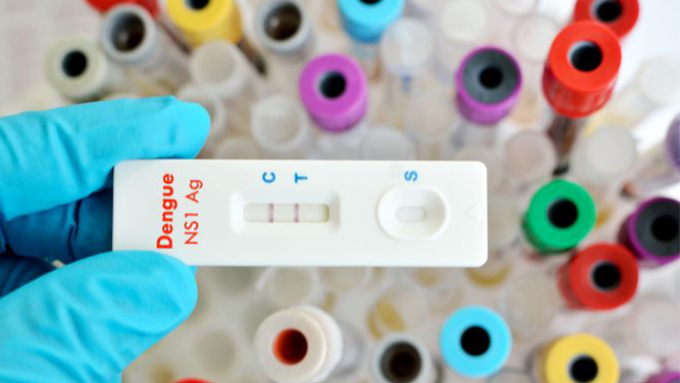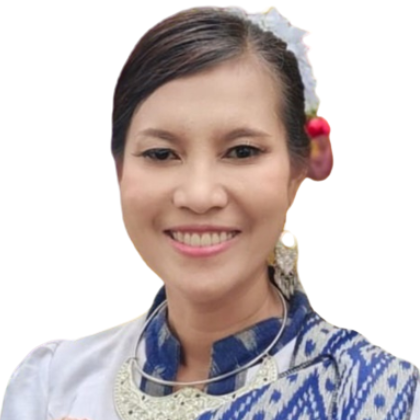Persebaran Demam Berdarah Dengue Berdasarkan Faktor Kepadatan Penduduk, Curah Hujan, dan Angka Bebas Jentik (ABJ) di Kota Madiun

Unduhan
Latar Belakang: Demam berdarah dengue (DBD) adalah suatu penyakit yang disebabkan oleh virus dengue, virus tersebut dapat menyebar dan masuk ke dalam tubuh manusia dibawa oleh nyamuk dengan jenis Aedes Aegypti dan Aedes Albopictus. Pengaruh lingkungan dapat meningkatkan perkembangbiakan nyamuk seperti suhu, curah hujan, dan kelembaban.
Tujuan: Mengetahui sebaran kasus DBD pada kelurahan-kelurahan yang ada di Kota Madiun dengan memanfaatkan analisis spasial.
Metode: Kuantitatif analitik dengan pendekatan analisis data sekunder, desain penelitian yang digunakan adalah cross-sectional. Penelitian ini menggunakan pendekatan spasial geografis untuk analisis faktor risiko penyakit DBD yang berhubungan dengan jumlah kasus DBD di Kota Madiun pada tahun 2020.
Hasil: Rata- rata kelurahan memiliki jumlah kasus 1-7 kasus yaitu sebanyak 20 kelurahan, Kepadatan penduduk rata-rata pada rentang angka 1775-5633 dengan 17 kelurahan, rata-rata kelurahan yaitu sejumlah 16 kelurahan memilki nilai angka bebas jentik 95%-97%, Semua kelurahan memilki curah hujan dalam rentang angka 100-300 mm, terdapat 21 kelurahan memiliki skor tingkat risiko penyakit DBD sebesar 1-2 dan 6 kelurahan memiliki skor sebesar 2-3.
Kesimpulan: Rata-rata kelurahan di Kota Madiun memiliki kepadatan penduduk dalam kategori rendah. Terdapat 7 kelurahan di Kota Madiun yang memiliki nilai ABJ dibawah 95%. Seluruh kelurahan memilki tingkat curah hujan dengan kategori sedang yaitu 100-300 mm. Tingkat risiko DBD tinggi pada suatu wilayah belum tentu menunjukkan bahwa kasus DBD di wilayah tersebut tinggi. Pencegahan penyakit DBD dapat dilakukan untuk mengurangi risiko terjadinya peningkatan kasus.
Alfiyanti, U. N. and Siwiendrayanti, A. (2021) ‘Analisis Spasial Dan Temporal Kejadian DBD Di Kota Semarang Tahun 2016-2019', JURNAL KESEHATAN LINGKUNGAN: Jurnal dan Aplikasi Teknik Kesehatan Lingkungan, 18(1), p. 39. doi: 10.31964/jkl.v18i1.286.
Arya, R. (2020) ‘BIOMA: Jurnal Biologi', BIOMA Jurnal Biologi, IX(2), p. 86.
Chandra, E. (2019) ‘Pengaruh Faktor Iklim, Kepadatan Penduduk dan Angka Bebas Jentik (ABJ) terhadap Kejadian Demam Berdarah Dengue (DBD) di Kota Jambi', Jurnal Pembangunan Berkelanjutan, 1(1), pp. 1–15. Available at: https://doi.org/10.22437/jpb.v21i1.5101%0APENGARUH.
Indonesia, R. (2017) Undang-Undang republik Indonesia No 50 Tahun 2017.
kementrian kesehatan RI (2018) Situasi Penyakit Demam Berdarah di Indonesia Tahun 2017.
Lembaga Ilmu Pengetahuan Indonesia dan Kementerian Kesehatan RI (2019) Dengue Update Menilik Perjalanan Dengue di Jawa Barat. pertama. Jakarta: LIPI Press.
Lestanto, F. (2018) ‘Analisis spasial faktor - faktor yang berhubungan dengan kejadian demam berdarah dengue di puskesmas wilayah kerja di Bantul', Jurnal Ilmiah Rekam Medis Dan Informatika Kesehatan, 8(1), pp. 66–78.
Murzella, S. (2020) ‘Pencegahan Pemutus Rantai Infeksi Virus Dengue (Demam Berdarah Dengue)', Osf.Io, p. 8. Available at: https://osf.io/preprints/z7s5f/.
Pascawati, N. A. et al. (2019) ‘Dampak Potensial Perubahan Iklim Terhadap Dinamika Penularan Penyakit DBD Di Kota Mataram', Balaba: Jurnal Litbang Pengendalian Penyakit Bersumber Binatang Banjarnegara, pp. 49–60. doi: 10.22435/blb.v15i1.1510.
Podung, G. C. D., Tatura, S. N. N. and Mantik, M. F. J. (2021) ‘Faktor Risiko Terjadinya Sindroma Syok Dengue pada Demam Berdarah Dengue', Jurnal Biomedik (Jbm), 13(2), p. 161. doi: 10.35790/jbm.13.2.2021.31816.
Prihartantie, I. T., Sulistyani, S. and Nurjazuli, N. (2021) ‘Hubungan Faktor Lingkungan Dan Faktor Demografi Dengan Kejadian Dbd Di Kota Salatiga', Angewandte Chemie International Edition, 6(11), 951–952., 5, pp. 2013–2015.
Rohman, H. and Abdillah, A. R. (2021) ‘Analisis Informasi Kesehatan Melalui Pemetaan Demam Berdarah Dengue (DBD) di Wilayah Prambanan, Gamping dan Mlati, Sleman, Yogyakarta', Tropical Public Health ..., pp. 9–18. Available at: https://talenta.usu.ac.id/trophico/article/view/7263.
Sandra, T. et al. (2019) ‘Faktor Yang Berpengaruh Terhadap Kejadian Demam Berdarah Dengue Pada Anak Usia 6-12 Tahun', Jurnal Ilmiah Permas: Jurnal Ilmiah STIKES Kendal, 9(1), pp. 28–35. doi: 10.32583/pskm.9.1.2019.28-35.
Suhermanto and Suparmi (2017) ‘Demam Berdarah Dengue Berdasarkan Kepadatan Penduduk dan Curah Hujan', Jurnal Bahana Kesehatan Masyarakat, 1(1), pp. 75–86.
Sukohar (2014) ‘Fakultas Kedokteran Universitas Lampung Demam Berdarah Dengue ( DBD ) Fakultas Kedokteran Universitas Lampung', Medula, 2(2), pp. 1–15.
Sutriyawan, A. and Dian, R. (2021) ‘Proyeksi dan Pemetaan Sebaran Kasus Demam Berdarah Dengue (DBD) Berbasis Sistem Informasi Geografi (SIG) Projection and Mapping of Dengue Hemorrhagic Fever (DHF) Cases Based on Geographic Information System (SIG)', Jurnal Kesehatan Masyarakat, 6(2), pp. 71–81.
Untari N, D., Soelistijadi, R. and Sunardi (2015) ‘Pemanfaatan Analisis Spasial untuk Pengolahan Data Spasial Sistem Informasi Geografi', 10.
WHO (2013) Pencegahan dan Penanggulangan Penyakit Demam Dengue dan Demam Berdarah Dengue. Jakarta: WHO & Departemen Kesehatan RI.
Hak Cipta (c) 2023 Aimmatus Shofifah, Anggara Widyartanto, Lilis Sulistyorini

Artikel ini berlisensiCreative Commons Attribution-ShareAlike 4.0 International License.
Media Gizi Kesmas by Unair is licensed under a Creative Commons Attribution-ShareAlike 4.0 International License.
1. The journal allows the author(s) to hold the copyright and to retain the publishing right of the article without restrictions.
2. The legal formal aspect of journal publication accessibility refers to Creative Commons Attribution-Share-Alike (CC BY-SA).
3. The Creative Commons Attribution-Share-Alike (CC BY-SA) license allows re-distribution and re-use of a licensed work on the conditions that the creator is appropriately credited and that any derivative work is made available under "the same, similar or a compatible license”. Other than the conditions mentioned above, the editorial board is not responsible for copyright violations.



















